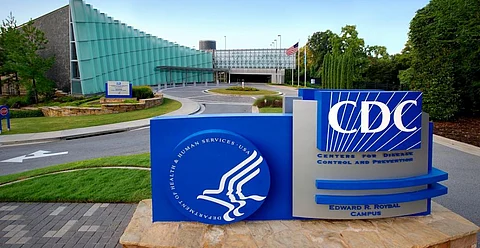

If you thought vaccination against the novel coronavirus disease (COVID-19) would get you rid of masks soon, thanks to the US Centres for Disease Control and Prevention (CDC) guidelines that came March 8, 2021, you were mistaken.
Experts in India have warned that the post COVID-19 vaccination guidelines given by the US body should not be taken as blank cheque to drop masks or other COVID-appropriate behaviour, at least in India.
Scientists Down To Earth contacted said it might be counterproductive if Indians did not read the nuances of the guidelines or simply misinterpreted them.
The CDC published its first set of guidelines for what it called ‘fully vaccinated’ people. It said people could refrain from using masks and following physical distancing ‘after 28 days of the process, if meeting indoors and all of them meeting have completed the process of vaccination’.
The guidelines also said fully vaccinated people could visit unvaccinated people from a ‘single household who are at low risk for severe COVID-19 disease indoors without wearing masks or physical distancing’. These people might also refrain from quarantine and testing following a known exposure if asymptomatic.
Vineeta Bal, an immunologist and a faculty member at the Indian Institute of Science Education and Research, termed the guidelines, vague and confusing. “It is too complicated for a large number of people here, in India, to follow every sentence of this document. Even for fully literate people, it is difficult to understand the nuances of these guidelines. And, if any selective interpretation is done, most likely, it is going to be wrong.”
For instance, she said, even after two doses, it takes about two-weeks’ time to develop antibodies, and such nuances, she feared, might get lost in translation.
Bal also said the past few months in India clearly showed that people hardly paid attention to details. “The cases had hardly started dropping and we found people in India giving up on masks and attending all sorts of social gatherings. Therefore, it is difficult to trust people here,” she said.
Almost all domain experts and several international agencies also agree that vaccines against COVID-19 protect against the severe form of COVID-19 disease and not necessarily against infection itself.
“Even fully vaccinated people can contract and transmit infection though at much reduced frequency. Unless there is evidence to support no risk of transmission, the guideline on masks should stay. There is no scope of dropping guard,” Shahid Jameel, a virologist with Ashoka University.
The CDC guidelines said a growing body of evidence suggested that fully vaccinated people were less likely to have asymptomatic infection and potentially less likely to transmit SARS-CoV-2 to others.
“What it means is if one is vaccinated and s / he contracts infection, his / her neutralising antibodies (if they are enough) will kill 90 per cent of the virus. So, instead of generating, say, 100 new virus particles, only 10 new particles may be generated. Therefore, at the end of five days, s / he will transmit but transmit less virus since s / he is vaccinated. So, s / he will be an asymptomatic spreader,” Bal explained.
In that case, it will depend on the other person’s immunity if the little virus shed by a vaccinated individual is enough to make him / her sick or not.
Samiran Nanda, head of Indian Council of Medical Research (ICMR)’s epidemiology division, said there was no way the CDC guidelines could be accepted in India on the basis of similar science that the other two experts explained to Down To Earth. “Additionally, children, for example, are not being vaccinated currently in India. So even in closed settings, how do we say that we can be there without masks?” he asked.
Even if one were to go with the definition of full vaccination, as prescribed by the CDC, the proportion of that population is really very small in India. Considering the slow pace of vaccination at the moment, which though has picked up in the last few days, it may still take a very long to fully vaccinate a large chunk of the population.
“If one were to believe the serosurvey of ICMR, it clearly says, that a large part of the population is susceptible to the virus and is, therefore, away from developing any sort of immunity,” Nanda said.
One must also remember that the vaccination rate of the US, for which the CDC gave the guidelines, is also quite different from India. According to the Our World in Data tracker, the cumulative COVID-19 vaccine doses administered per 100 people in the US and India stand at 27.82 and 1.67, respectively, till March 8.